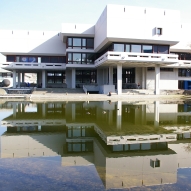| Lizenz: Creative Commons Namensnennung 4.0 International PDF - Veröffentlichte Version (3MB) |
- URN zum Zitieren dieses Dokuments:
- urn:nbn:de:bvb:355-epub-441500
- DOI zum Zitieren dieses Dokuments:
- 10.5283/epub.44150
Zusammenfassung
Inflammation and infection can trigger local tissue Na(+)accumulation. This Na+-rich environment boosts proinflammatory activation of monocyte/macrophage-like cells (M phi s) and their antimicrobial activity. Enhanced Na+-driven M phi function requires the osmoprotective transcription factor nuclear factor of activated T cells 5 (NFAT5), which augments nitric oxide (NO) production and contributes ...

Nur für Besitzer und Autoren: Kontrollseite des Eintrags






 Downloadstatistik
Downloadstatistik